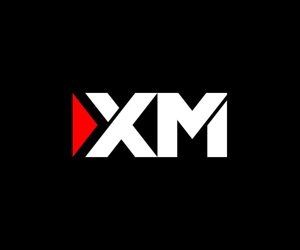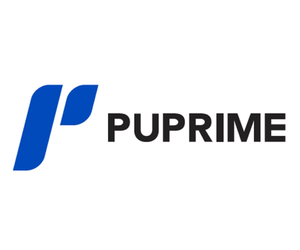Why Methodology Matters
Whenever people look at broker rankings, the first question is always the same: “How do you decide which brokers deserve a higher score?”
It’s an important question. Rankings only have value if they rest on clear, consistent, and transparent criteria. In the trading industry, where firms operate across dozens of jurisdictions with very different rules, a credible methodology is essential. Our goal is to provide investors and traders—whether beginners or professionals—with a fair, systematic way of understanding how brokers are rated.
This page explains the framework we use. It begins with the foundation of broker safety: regulation. From there, it considers how brokers actually perform in practice through execution quality. It then incorporates real-world evidence from client feedback and public data. Finally, it includes insight from our own research team, who draw on years of industry experience. Together, these four dimensions form the backbone of our scoring system.
Regulation as the Starting Point
Broker regulation is more than just paperwork; it is the first filter for assessing risk. A broker’s license determines whether client money is segregated, whether leverage is limited, and whether regulators have the authority to step in if something goes wrong.
The most respected regulators—such as the Financial Conduct Authority (FCA) in the U.K., the Australian Securities and Investments Commission (ASIC), and Europe’s ESMA—enforce rules that directly protect retail clients. These include limits on leverage, automatic margin close-out rules, and negative balance protection. In contrast, some offshore regulators issue little more than a registration certificate, providing no meaningful safeguard.
For this reason, regulation is weighted most heavily in our methodology.
The Four Floor Tests
To ensure consistency across jurisdictions, we apply four minimum tests that every regulator must meet before a broker under them can qualify for higher-tier recognition. These Four Floor Tests are:
- Licensing of activity – The regulator must explicitly license FX and CFD trading.
- Retail product controls – At least some statutory measures (such as leverage caps or margin rules) must be in place.
- Client money protections – Clear requirements for segregating client funds must exist.
- Active oversight – Evidence of real supervision, including inspections, audits, or enforcement actions, must be visible.
If a regulator fails on any of these four tests, it is automatically placed in the lower tier, regardless of other features.
Tier Classification of Regulators
Once the floor tests are applied, regulators are grouped into three tiers. This structure allows us to reflect meaningful differences in investor protection.
- Tier 1 – On-shore regulators. These include the SEC and CFTC in the U.S., FCA in the U.K., ASIC in Australia, MAS in Singapore, FINMA in Switzerland, and others. They combine strict statutory protections, high prudential standards, and active enforcement. Brokers regulated here receive the strongest baseline scores.
- Tier 2 – Mid-shore regulators. Examples include the DFSA in Dubai, FMA in New Zealand and FSC in Mauritius. These regulators issue genuine licenses and apply AML and prudential standards but may leave leverage limits or risk warnings to firm policy. They represent meaningful but lighter oversight compared with Tier 1.
- Tier 3 – Offshore regulators. These are typically company registries or lightly supervised commissions. They may not even specifically cover FX or CFDs. Oversight is minimal, leaving client protection largely in the broker’s hands. Brokers under Tier 3 regulators start with the lowest baseline scores.
This tiering ensures that our methodology reflects not just promises, but what is enforceable in practice.
Measuring Execution Quality
Regulation alone cannot capture the full picture. Even well-regulated brokers differ significantly in the quality of their trade execution. That is why the second dimension of our methodology examines operational performance.
Execution quality includes factors such as:
- Speed of order execution (measured in milliseconds).
- Slippage rates (how often trades are filled at a different price than requested).
- Requote frequency (the number of rejected or amended orders).
- Platform reliability (downtime and stability during peak trading hours).
Where possible, we rely on audited statistics or regulatory disclosures (for example, the RTS-27 and RTS-28 reports in Europe). Brokers that provide transparent, verifiable execution data can score higher. Brokers that withhold such data are capped at lower scores.
Incorporating Client Feedback and Open Data
The third dimension of our methodology considers what happens in practice. No regulator or broker will highlight its own shortcomings, but clients often do.
We analyze:
- Regulatory complaints and enforcement actions published by authorities such as the FCA, ASIC, or CFTC.
- Independent review data, while adjusting for fake or bot reviews.
- Patterns in client feedback, such as repeated reports of withdrawal delays, poor customer support, or platform issues.
Social media monitoring and sentiment analysis supplement this process. While individual complaints are weighted cautiously, consistent themes across multiple sources are given serious consideration.
Staff Insight and Professional Judgment
Numbers tell most of the story, but not all of it. That is why we reserve 10% of the overall score for staff insight. This reflects the informed judgment of our research team, who draw on years of experience in trading, compliance, and brokerage operations.
Staff insight captures soft factors that are difficult to quantify but matter to traders:
- How transparent a broker is when asked about its policies.
- The quality of customer service during test interactions.
- Responsiveness to regulatory changes.
- Whether the broker’s marketing materials align with actual practice.
By including this element, we recognize that human expertise can catch nuances data alone may miss, while still keeping the majority of the score anchored in objective criteria. Staff insight is capped at 10% of the score and cannot override regulatory classification or offset deficiencies in execution or client protection. Its purpose is to add nuance where hard data leaves gaps, while ensuring the ratings remain anchored in objective evidence.
Weighting and Composite Scoring
The four dimensions—regulation, execution, client feedback, and staff insight—are combined into a composite score. The weightings reflect the relative importance of each factor:
- Regulation – 35%
- Execution Quality – 30%
- Client Feedback & Open Data – 25%
- Staff Insight – 10%
This balance ensures that regulation remains the foundation, execution and client experience weigh heavily, and staff expertise provides a final layer of judgment.
Final Classification Bands
Based on the composite score, brokers are grouped into clear categories:
- Gold Standard (80–100 points): Tier 1 regulator, strong execution, positive client reputation, and strong staff evaluations.
- Silver Standard (60–79 points): Tier 1 or 2 regulator, average to good execution, generally positive reputation.
- Bronze Standard (40–59 points): Tier 2 or 3 regulator, mixed execution or reputation.
- Red Flag (below 40 points): Tier 3 regulator, weak execution, or significant unresolved complaints.
These bands give investors a straightforward way to understand where a broker stands relative to peers.
Conclusion: Transparency Above All
The purpose of this methodology is to give traders and investors a clear, consistent framework for comparing brokers. By starting with regulation, applying the Four Floor Tests, classifying regulators into three tiers, and then layering in execution quality, client feedback, and staff insight, we create a balanced system that emphasizes both safety and performance.
For readers, this means our broker ratings are not based on marketing claims or isolated anecdotes. They reflect enforceable rules, measurable data, client experiences, and professional judgment. In a market where trust is often hard to come by, our commitment is simple: a transparent, structured methodology that helps you understand the risks and rewards of choosing a broker.




